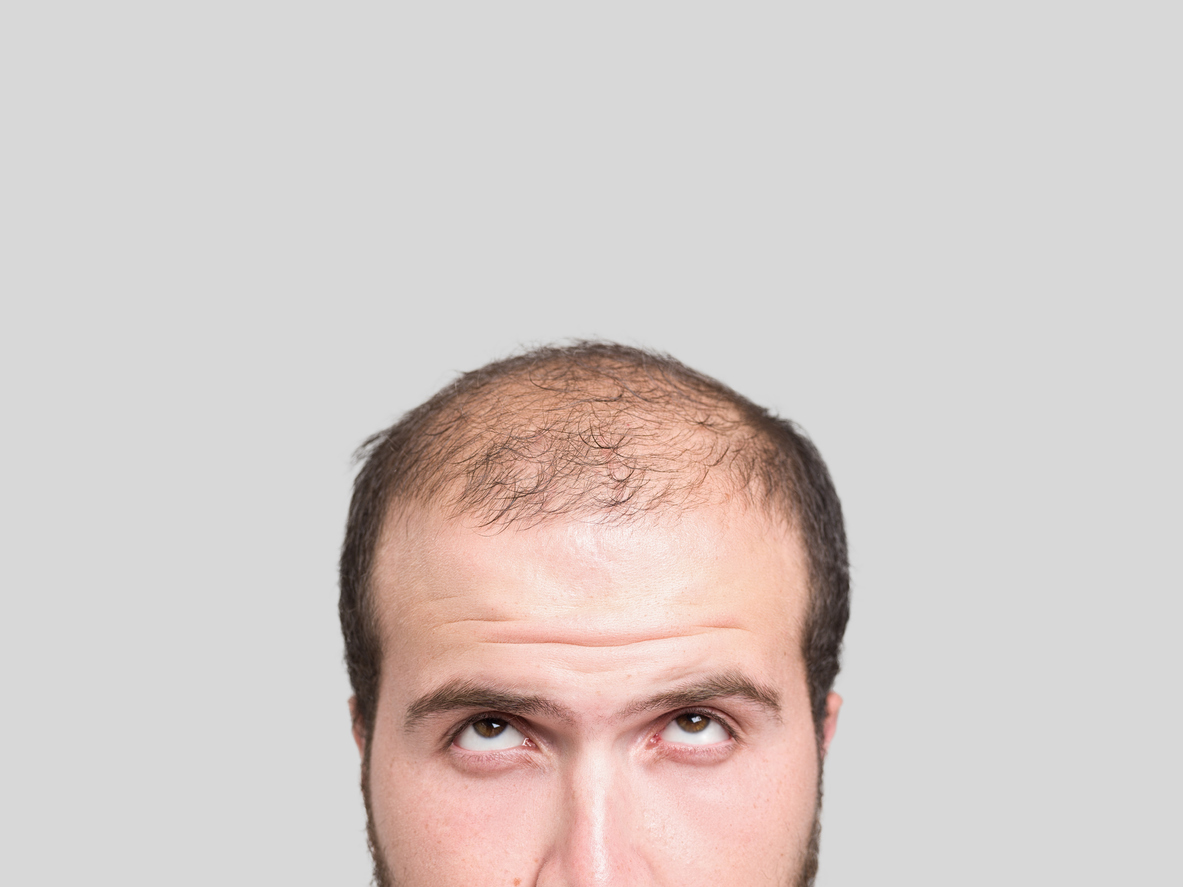by Vlad Ratushny, MD, PhD
Topical minoxidil (also known as by the brand name Rogaine) is an established hair loss treatment available for both men and women. This hair loss treatment was discovered by chance as a “side effect” of an older blood pressure medication, oral minoxidil, that is currently rarely used. When patients took oral minoxidil for blood pressure, they had the side effect of growing more hair on top of their head but also elsewhere on the body. Although topical minoxidil has become a mainstay treatment in hair loss, there is a recent study showing that low doses of oral minoxidil may be a helpful adjunct treatment for female-pattern hair loss (1). Oral minoxidil has also been investigated as a potential agent for male-pattern hair loss.
In a recent study in the Journal of the American Academy of Dermatology, oral minoxidil was evaluated as a treatment for male pattern hair loss (2). A group of 41 male patients received low dose (2.5mg or 5mg/day) oral minoxidil for ≥6 months as either a monotherapy or as an add-on therapy for their hair loss. Dermatologists assessed clinical before and after photos and judged changes in hair loss on a 4 point scale. The 4 point scale measured worsening, stabilization, mild improvement, or marked improvement. 90 percent of patients experienced clinical improvement, while over 1/4th (26.8%) of patients showed marked improvement in their hair loss. Of note, almost 1/3rd (29.3%) of patients experienced minor adverse events such as hypertrichosis (i.e. development of hair in other areas of the body in addition to the scalp in 24.3%), lower limb edema (4.8%), and shedding (2.4%). A caveat to this study is that it was retrospective by design, which is different than a clinical trial intended to prospectively test a new treatment against a control group. Also, this study had a very small sample size and lacked a control group. Nonetheless, the take-away from this study is that oral minoxidil may be a useful adjunct or monotherapy for male pattern hair loss. This would especially be relevant in patients who can’t tolerate finasteride (Propecia) and/or those who get lackluster results with topical minoxidil (Rogaine).
Many patients who come to my clinic have already tried many or all of the well-established medical treatments (topical and oral) for hair loss and are looking for a permanent solution. Hair transplantation is the only permanent solution to hair loss and can serve as a great adjunct to patients who are currently on medical treatments for hair loss but still have not achieved their hair coverage goals.
References:
1) Female pattern hair loss: a pilot study investigating combination therapy with low-dose oral minoxidil and spironolactone.
Sinclair RD. Int J Dermatol. 2018 Jan;57(1):104-109. doi: 10.1111/ijd.13838. Epub 2017 Dec 12.
2) Effectiveness and safety of low-dose oral minoxidil in male androgenetic alopecia.
Jimenez-Cauhe J1, Saceda-Corralo D2, Rodrigues-Barata R2, Hermosa-Gelbard A3, Moreno-Arrones OM2, Fernandez-Nieto D3, Vaño-Galvan S2.J Am Acad Dermatol. 2019 May 2. pii: S0190-9622(19)30685-1. doi: 10.1016/j.jaad.2019.04.054. [Epub ahead of print]


